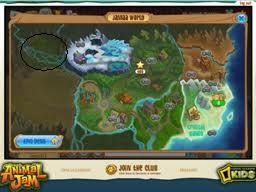

In most American-style crosswords, the majority of the clues in the puzzle are straight clues, with the remainder being one of the other types described below.Ĭrossword clues are generally consistent with the solutions. For example, the answer to the clue "PC key" for a three-letter answer could be ESC, ALT, TAB, DEL, or INS, so until a check is filled in, giving at least one of the letters, the correct answer cannot be determined. Often, a straight clue is not in itself sufficient to distinguish between several possible answers, either because multiple synonymous answers may fit or because the clue itself is a homonym (e.g., "Lead" as in to be ahead in a contest or "Lead" as in the element), so the solver must make use of checks to establish the correct answer with certainty. Some Japanese crosswords are numbered from top to bottom down each column, starting with the leftmost column and proceeding right.Ī person works on a crossword puzzle in the subway, New York City, 2008 Clues: conventions and types Īmerican-style crossword clues, called straight or quick clues by those more familiar with cryptic puzzles, are often simple definitions of the answers.

Numbers are almost never repeated numbered cells are numbered consecutively, usually from left to right across each row, starting with the top row and proceeding downward. For example, the answer to a clue labeled "17 Down" is entered with the first letter in the cell numbered "17", proceeding down from there. Typically clues appear outside the grid, divided into an across list and a down list the first cell of each entry contains a number referenced by the clue lists. One of the smallest crosswords in general distribution is a 4×4 crossword compiled daily by John Wilmes, distributed online by USA Today as "QuickCross" and by Universal Uclick as "PlayFour". an easy puzzle may be referred to as a "Monday" or a "Tuesday", a medium-difficulty puzzle as a "Wednesday", and a truly difficult puzzle as a "Saturday". solvers to use the day of the week as a shorthand when describing how hard a puzzle is: e.g.

Their larger Sunday puzzle is about the same level of difficulty as a weekday-size Thursday puzzle. The New York Times puzzles also set a common pattern for American crosswords by increasing in difficulty throughout the week: their Monday puzzles are the easiest and the puzzles get harder each day until Saturday. For example, many weekday newspaper puzzles (such as the American New York Times crossword puzzle) are 15×15 squares, while weekend puzzles may be 21×21, 23×23, or 25×25. Puzzles are often one of several standard sizes. Grids forming shapes other than squares are also occasionally used. "Free form" crosswords ("criss-cross" puzzles), which have simple, asymmetric designs, are often seen on school worksheets, children's menus, and other entertainment for children. Two of the common ones are barred crosswords, which use bold lines between squares (instead of shaded squares) to separate answers, and circular designs, with answers entered either radially or in concentric circles.

Substantial variants from the usual forms exist. Most puzzle designs also require that all white cells be orthogonally contiguous (that is, connected in one mass through shared sides, to form a single polyomino). For example, if the top row has an answer running all the way across, there will often be no across answers in the second row.Īnother tradition in puzzle design (in North America, India, and Britain particularly) is that the grid should have 180-degree rotational (also known as "radial") symmetry, so that its pattern appears the same if the paper is turned upside down. Crossword grids elsewhere, such as in Britain, South Africa, India and Australia, have a lattice-like structure, with a higher percentage of shaded squares (around 25%), leaving about half the letters in an answer unchecked. In such puzzles shaded squares are typically limited to about one-sixth of the total. is part of both an "across" word and a "down" word) and usually each answer must contain at least three letters. Please help improve this article by introducing citations to additional sources.Ĭrossword grids such as those appearing in most North American newspapers and magazines feature solid areas of white squares. Relevant discussion may be found on the talk page. This section relies largely or entirely on a single source.


 0 kommentar(er)
0 kommentar(er)
